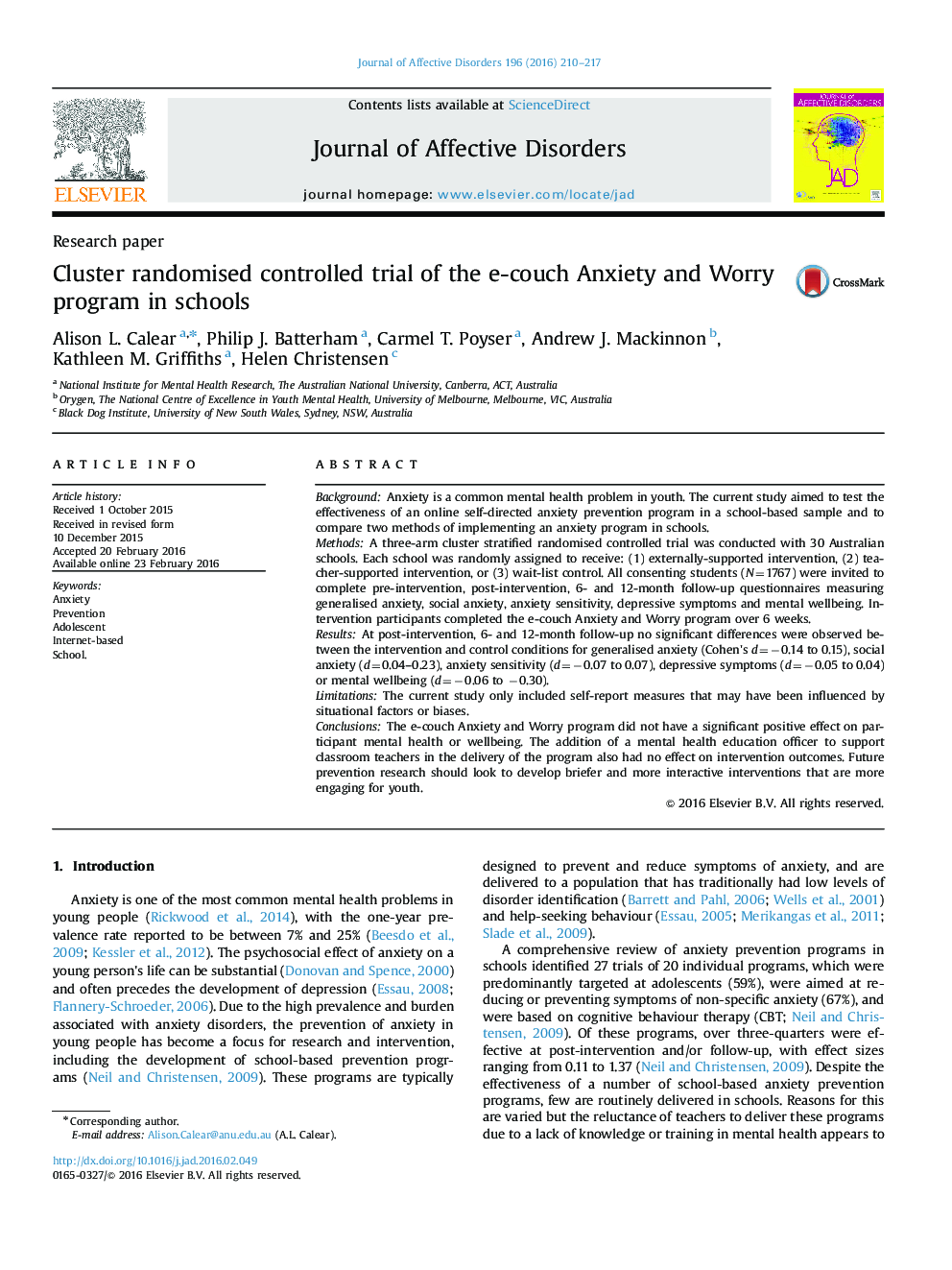| Article ID | Journal | Published Year | Pages | File Type |
|---|---|---|---|---|
| 6230344 | Journal of Affective Disorders | 2016 | 8 Pages |
â¢A three-arm cluster randomised controlled trial was conducted with 30 schoolsâ¢Schools were randomised to one of two intervention groups or the wait-list controlâ¢Participants were assessed on symptoms of anxiety, depression and well-beingâ¢No significant differences were observed between the groups at post or follow-upâ¢Prevention research should look to develop briefer and more interactive programs
BackgroundAnxiety is a common mental health problem in youth. The current study aimed to test the effectiveness of an online self-directed anxiety prevention program in a school-based sample and to compare two methods of implementing an anxiety program in schools.MethodsA three-arm cluster stratified randomised controlled trial was conducted with 30 Australian schools. Each school was randomly assigned to receive: (1) externally-supported intervention, (2) teacher-supported intervention, or (3) wait-list control. All consenting students (N=1767) were invited to complete pre-intervention, post-intervention, 6- and 12-month follow-up questionnaires measuring generalised anxiety, social anxiety, anxiety sensitivity, depressive symptoms and mental wellbeing. Intervention participants completed the e-couch Anxiety and Worry program over 6 weeks.ResultsAt post-intervention, 6- and 12-month follow-up no significant differences were observed between the intervention and control conditions for generalised anxiety (Cohen's d=â0.14 to 0.15), social anxiety (d=0.04-0.23), anxiety sensitivity (d=â0.07 to 0.07), depressive symptoms (d=â0.05 to 0.04) or mental wellbeing (d=â0.06 to â0.30).LimitationsThe current study only included self-report measures that may have been influenced by situational factors or biases.ConclusionsThe e-couch Anxiety and Worry program did not have a significant positive effect on participant mental health or wellbeing. The addition of a mental health education officer to support classroom teachers in the delivery of the program also had no effect on intervention outcomes. Future prevention research should look to develop briefer and more interactive interventions that are more engaging for youth.
